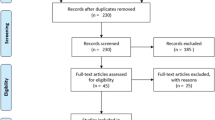Abstract
The relationship between certain features of adult speech and autistic children's response adequacy was examined within the context of unstructured, dyadic conversations. On separate sessions, four verbal, nonecholalic children were observed talking with their mothers and teachers. Analysis of conversational turns showed that as the number of facilitating features contained in adults' eliciting utterances increased, the proportion of adequate replies from the children increased. In this analysis, facilitating features included the use of Yes/No questions, questions that were conceptually simple, and questions that were semantically contingent on the child's topic. In a further analysis, it was found that adults tended to modify their use of these features in response to child feedback, although this tendency was relatively small and observed only in a minority of the sequences evaluated. The findings are discussed in terms of pragmatic deficits associated with autism and implications for intervention with this population.
Similar content being viewed by others
References
Ball, J. (1978).A pragmatic analysis of autistic children's language with respect to aphasia and normal language development. Unpublished doctoral dissertation, Melbourn University.
Baltaxe, C. (1977). Pragmatic deficits in the language of autistic adolescents.Journal of Pediatric Psychology, 2, 176–180.
Beisler, J. M., & Tsai, L. Y. (1983). A pragmatic approach to increase expressive language skills in young autistic children.Journal of Autism and Developmental Disorders, 13, 287–303.
Bernard-Opitz, V. (1982). Pragmatic analysis of the communication behavior of an autistic child.Journal of Speech and Hearing Disorders, 47, 99–109.
Blank, M., & Franklin, E. (1980). Dialogue with preschoolers: A cognitively based system of assessment.Applied Psycholinguistics, 1, 127–150.
Bohannon, J. N., & Marquis, A. L. (1977). Children's control of adult speech.Child Development, 48, 1002–1008.
Bugental, D. B., Caporael, L., & Skennum, W. A. (1980). Experimentally produced child uncontrollability: Effects on the potency of adult communication patterns.Child Development, 51, 520–528.
Cantor, N. L., & Gelfand, D. M. (1977). Effects of responsiveness and sex of children on adult's behavior.Child Development, 48, 232–238.
Cantwell, D. P., Baker, L., & Rutter, M. (1977). Families of autistic and dysphasic children. II. Mothers' speech to the children.Journal of Autism and Childhood Schizophrenia, 7, 313–327.
Clark, P., & Rutter, M. (1981). Autistic children's responses to structure and to interpersonal demands.Journal of Autism and Developmental Disorders, 11, 201–217.
Cramblitt, N. S., & Siegel, G. M. (1977). Verbal environment of a language impaired child.Journal of Speech and Hearing Disorders, 42, 474–482.
Cross, T. G. (1977). Mothers' speech adjustments: The contributions of selected child listener variables. In C. E. Snow & C. A. Ferguson (Eds.),Talking to children: Language input and acquisition. Cambridge: Cambridge University Press.
Cross, T. G. (1978). Mother's speech and its association with rate of linguistic development in young children. In N. Waterson & C. Snow (Eds.),The development of communication. Chichester: Wiley.
Furrow, D., Nelson, K., & Benedict, H. (1979). Mothers' speech to children and syntactic development: Some simple relationships.Journal of Child Language, 6, 423–442.
Hart, B., & Rogers-Warren, A. (1978). A milieu approach to teaching language. In R. L. Schiefelbusch (Ed.),Language intervention strategies. Baltimore: University Park Press.
Jaffe, J., & Feldstein, S. (1970).Rhythms of dialogue. New York: Academic Press.
Kanner, L. (1943). Autistic disturbance of affective contact.Nervous Child, 2, 217–250.
Kramer, C., James, S., & Saxman, J. (1979). A comparison of language samples elicited at home and in the clinic.Journal of Speech and Hearing Disorders, 44, 321–330.
Lee, L., & Canter, S. (1971). Developmental sentence scoring: A clinical procedure for estimating syntactic development in children's spontaneous speech.Journal of Speech and Hearing Disorders, 36, 315–341.
Lord, C., Merrin, D. J., Vest, L. O., & Kelly, K. M. (1983). Communication behavior of adults with an autistic 4-year-old boy and his nonhandicapped brother.Journal of Autism and Developmental Disorders, 13, 1–17.
Lovaas, D. I. (1977).The autistic child: Language development through behavior modification. New York: Irvington.
Paccia, J. M. (1985).Discourse deficits in autistic children: Individual variation and the role of input language. Unpublished doctoral dissertation, Boston University.
Paccia-Cooper, J., Curcio, F., & Sacharko, G. (1981, October).A comparison of discourse features in normal and autistic language. Paper presented at the Sixth Annual Boston University Conference on Language Development, Boston.
Piserchia, E. A., & Curcio, F. (1980, April).Responses of autistic children to clarification requests. Paper presented at the annual meetings of the Eastern Psychological Association, Hartford, Connecticut.
Pratt, M. W., Bumstead, D. C., & Raynes, N. V. (1976). Attendant staff speech to institutionalized retarded: Language use as a measure of quality care.Journal of Child Psychology and Psychiatry and Allied Disciplines, 17, 133–143.
Rutter, M. (1978). Definition and diagnosis of autism.Journal of Autism and Childhood Schizophrenia, 8, 139–161.
Schreibman, L., & Lovaas, O. I. (1973). Overselective responses to social stimuli by autistic children.Journal of Abnormal Child Psychology, 1, 152–168.
Schuler, A. L. (1980). Aspects of communication. In W. H. Fay & A. L. Schuler (Eds.),Emerging language in autistic children. Baltimore: University Park Press.
Scott, C., & Taylor, A. (1978). A comparison of home and clinic gathered language samples.Journal of Speech and Hearing Disorders, 43, 482–495.
Snow, C. (1972) Mothers' speech to children learning language.Child Development, 43, 549–565.
Tager-Flusberg, H. (1981, July).Pragmatic development and its implications for social interaction in autistic children. Paper presented at the International Symposium on Autism Research, Boston.
Author information
Authors and Affiliations
Additional information
This research was supported in part by grants from the Boston University Graduate School and the National Institute of Mental Health (MH 38704). We thank Michelle Pellerin, Deborah Hay, and John Houlihan for their assistance with data collection and analysis. We also gratefully acknowledge the assistance and patience of participating staff, parents, and children of the League School, Newton, Massachusetts.
Rights and permissions
About this article
Cite this article
Curcio, F., Paccia, J. Conversations with autistic children: Contingent relationships between features of adult input and children's response adequacy. J Autism Dev Disord 17, 81–93 (1987). https://doi.org/10.1007/BF01487261
Issue Date:
DOI: https://doi.org/10.1007/BF01487261



